 Triumph Scrambler 1200 XC - Service manual > Safety Instructions
Triumph Scrambler 1200 XC - Service manual > Safety Instructions
Jacking and Lifting
WARNING
Always ensure that any lifting apparatus has adequate load and safety capacity for the weight to be lifted. Ensure the motorcycle is well supported to prevent any possibility of the machine falling prior to lifting or jacking or while repairs and servicing are carried out.
Never rely on a single means of support when working with the motorcycle. Use additional safety supports and straps to prevent toppling.
Do not leave tools, lifting equipment, spilled oil, etc. in a place where they could become a hazard to health. Always work in a clean, tidy area and put all tools away when the work is finished.
Precautions Against Damage
Avoid spilling brake fluid or battery acid on any part of the bodywork. Wash spillages off with water immediately.
Disconnect the battery earth lead before starting work, see ELECTRICAL PRECAUTIONS.
Always use the recommended service tool where specified.
Protect exposed bearing and sealing surfaces, and screw threads from damage.
Coolant
WARNING
Coolant mixture, which is blended with antifreeze and corrosion inhibitors contains toxic chemicals which are harmful to the human body. Never swallow antifreeze, corrosion inhibitors or any of the motorcycle coolant.
WARNING
Do not remove the radiator cap when the engine is hot. When the engine is hot, the coolant inside the radiator is hot and also under pressure. Contact with the pressurised coolant will cause scalds and skin damage.
CAUTION
The coolant antifreeze contains a corrosion inhibitor which helps prevent damage to the metal surfaces inside the cooling system. Without this inhibitor, the coolant would 'attack' the metals and the resulting corrosion would cause blockages in the cooling system leading to engine overheating and damage. Always use the correct antifreeze as specified in the Owner's Handbook. Never use a methanol based antifreeze as this does not contain the required corrosion inhibition properties.
CAUTION
Distilled water must be used with the antifreeze (see specification for antifreeze) in the cooling system.
If hard water is used in the system, it causes scale accumulation in the water passages, and considerably reduces the efficiency of the cooling system.
Reduced cooling system efficiency may lead to the engine overheating and engine damage.
Cleaning Components
A high flashpoint solvent is recommended to reduce fire hazard.
Always follow container directions regarding the use of any solvent.
Always use the recommended cleaning agent or equivalent.
Do not use degreasing equipment for components containing items which could be damaged by the use of this process. Whenever possible, clean components and the area surrounding them before removal. Always observe scrupulous cleanliness when cleaning dismantled components.
Lubrication
The majority of engine wear occurs while the engine is warming up and before all the rubbing surfaces have an adequate lubrication film. During assembly, oil or grease (whichever is more suitable) should be applied to any rubbing surface, which has lost its lubrication film. Old grease and dirty oil should be cleaned off. This is because used lubricants will have lost some lubrication qualities and may contain abrasive foreign particles.
Use recommended lubricants. Some oils and greases in particular should be used only in certain applications and may be harmful if used in an application for which they are not intended. This manual makes reference to molybdenum disulphide grease in the assembly of certain engine and chassis parts. Always check manufacturer recommendations before using such special lubricants.
Joints and Joint Faces
Assemble joints dry unless otherwise specified in this manual.
If gaskets and/or jointing compound is recommended for use; remove all traces of old jointing material prior to reassembly. Do not use a tool which will damage the joint faces and smooth out any scratches or burrs on the joint faces using an oil stone. Do not allow dirt or jointing material to enter any tapped holes.
Gaskets, O-rings
Do not reuse a gasket or O-ring once it has been in service. The mating surfaces around the gasket should be free of foreign matter and perfectly smooth to avoid oil or compression leaks.
Liquid Gasket, Non-permanent Locking Agent
Follow manufacturer's directions for cleaning and preparing surfaces where these compounds will be used. Apply sparingly as excessive amounts of sealer may block engine oil passages and cause serious damage.
Prior to reassembly, blow through any pipes, channels or crevices with compressed air.
WARNING
To prevent injury, always use eye, face and ear protection when using compressed air. Always wear protective gloves if the compressed air is to be directed in proximity to the skin.
Screw Threads
Metric threads to ISO standard are used.
Damaged nuts, bolts and screws must always be discarded.
Castellated nuts must not be loosened back to accept a split pin, except in those recommended cases when this forms part of an adjustment.
Do not allow oil or grease to enter blind threaded holes. The hydraulic action on screwing in the bolt or stud could split the housing.
Always tighten a nut or bolt to the recommended torque figure. Damaged or corroded threads can affect the torque reading.
Unless specified, threaded fixings must always be fitted dry (no lubrication).
WARNING
Never lubricate a thread unless instructed to do so.
When a thread of a fixing is lubricated, the thread friction is reduced. When the fixing is tightened, reduced friction will cause over tightening and possible fixing failure.
A fixing which fails in service could cause component detachment leading to loss of control and an accident.
Locking Devices
Always release locking tabs and fit new locking washers. Do not reuse locking tabs.
Fitting a Split Pin
Always fit new split pins of the correct size for the hole in the bolt or stud. Do not loosen back castle nuts when fitting a split pin, except in those recommended cases when this forms part of an adjustment.
Always fit new roll pins of an interference fit in the hole.
Circlips, Retaining Rings
Replace any circlips and retaining rings that are removed. Removal weakens and deforms circlips causing looseness in the circlip groove. When installing circlips and retaining rings, take care to compress or expand them only enough to install them.
Always use the correct replacement circlip as recommended in the Triumph parts catalogue.
Self-Locking Nuts
Self-locking nuts can be reused, provided resistance can be felt when the locking portion passes over the thread of the bolt or stud.
DO NOT reuse self-locking nuts in critical locations, e.g. suspension components.
Always use the correct replacement self-locking nut.
Encapsulated Bolts
An encapsulated bolt can be identified by a coloured section of thread which is treated with a locking agent.
Unless a specified repair procedure states otherwise, encapsulated bolts cannot be reused and MUST be replaced if disturbed or removed.
WARNING
Failure to replace an encapsulated bolt could lead to a dangerous riding condition. Always replace encapsulated bolts.
Oil and Grease Seals
Replace any oil or grease seals that are removed. Removal will cause damage to an oil seal which, if reused, would cause an oil leak.
Ensure the surface on which the new seal is to run is free of burrs or scratches.
Renew the component if the original sealing surface cannot be completely restored.
Protect the seal from any surface which could cause damage over which it has to pass when being fitted. Use a protective sleeve or tape to cover the relevant surface and avoid touching the sealing lip.
Lubricate the sealing lips with a recommended lubricant. This will help to prevent damage in initial use. On dual lipped seals, smear the area between the lips with appropriate grease.
When pressing in a seal which has manufacturer's marks, press in with the marks facing out.
Seals must be pressed into place using a suitable driver. Use of improper tools will damage the seal.
Press
A part installed using a press or driver, such as a wheel bearing, should first be coated with oil or grease on its outer or inner circumference so that it will locate smoothly.
Ball Bearing
When installing a ball bearing, the bearing race which is an interference fit should be pushed by a suitable driver. This prevents severe stress or damage to the load carrying components. Press a ball bearing until it touches the shoulder in the bore or on the shaft.
With the sealing lip facing the lubricant, press or drift a seal to the depth of its housing, if the housing is shouldered, or flush with the face of the housing where no shoulder is provided.
See also:
 Triumph Scrambler 1200 XC - Service manual > Ignition System Safety Precautions
Triumph Scrambler 1200 XC - Service manual > Ignition System Safety Precautions
WARNING The ignition system produces extremely high voltages. Do not touch any part of the ignition system or any cables while the engine is running.
 Triumph Scrambler 1200 XC - Service manual > Chassis Bearing Lubrication
Triumph Scrambler 1200 XC - Service manual > Chassis Bearing Lubrication
Note This information relates only to bearing lubrication. For the procedures necessary to replace a bearing, always refer to the relevant section of this Service Manual. Bearings installed in engine and transmission applications are not covered by this information. Refer to the Lubrication chapter or the relevant engine chapter for additional information.
 Ducati Scrambler
Ducati Scrambler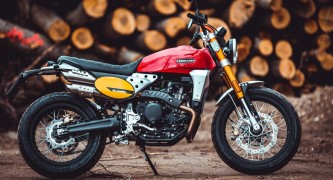 Fantic Caballero 500
Fantic Caballero 500 Indian FTR 1200
Indian FTR 1200 Moto Guzzi V85 TT
Moto Guzzi V85 TT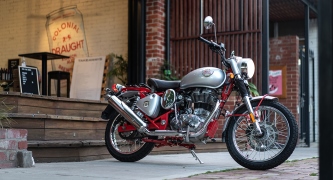 Royal Enfield Bullet Trials Works Replica
Royal Enfield Bullet Trials Works Replica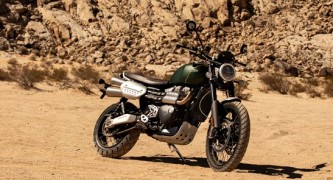 Triumph Scrambler 1200 XE
Triumph Scrambler 1200 XE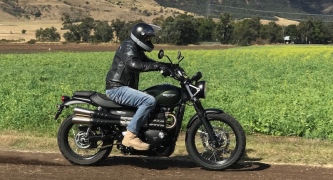 Triumph Street Scrambler
Triumph Street Scrambler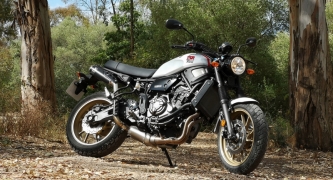 Yamaha XSR700
Yamaha XSR700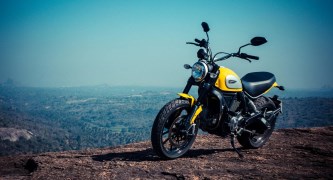 Ducati Scrambler 800
Ducati Scrambler 800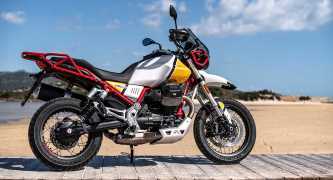 Moto Guzzi V85 TT
Moto Guzzi V85 TT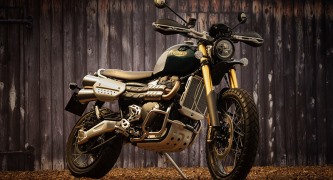 Triumph Scrambler 1200 XC
Triumph Scrambler 1200 XC